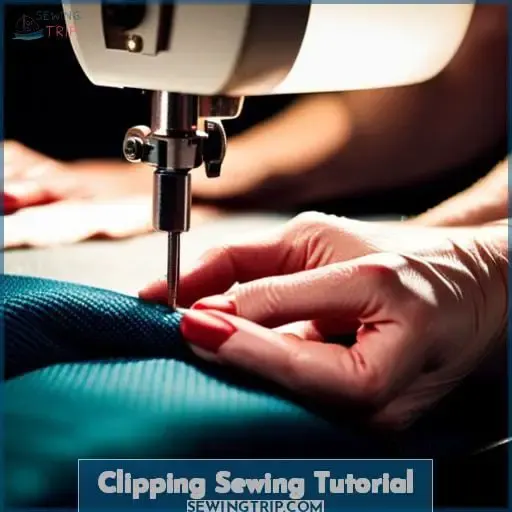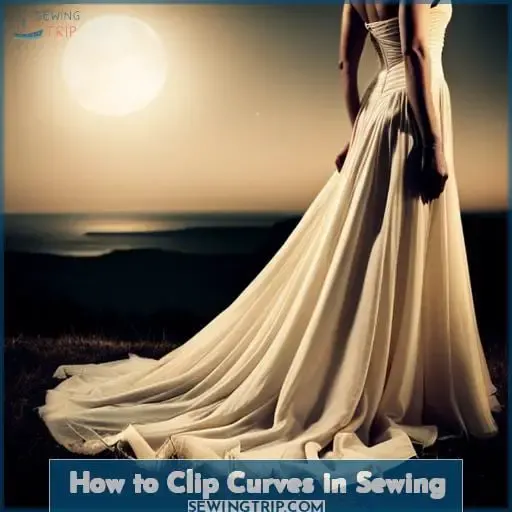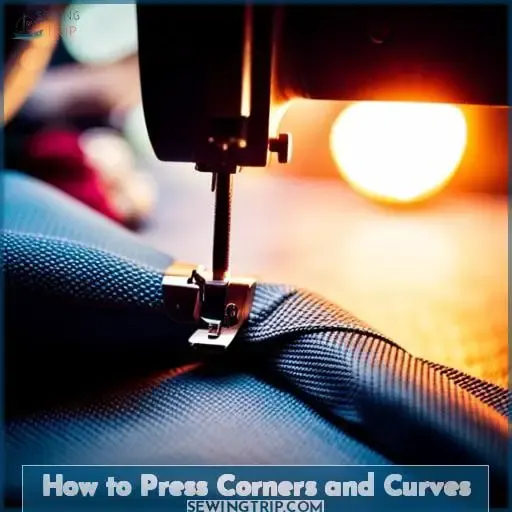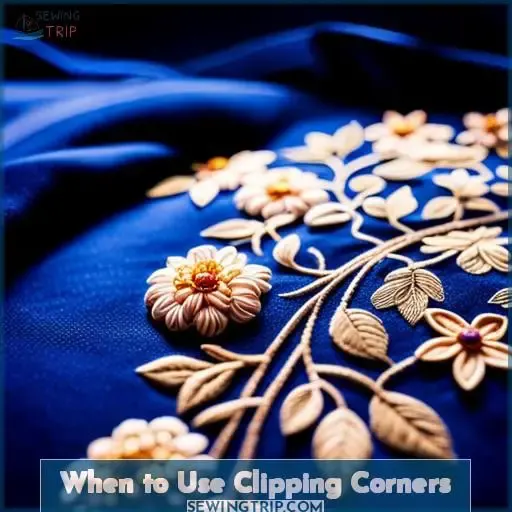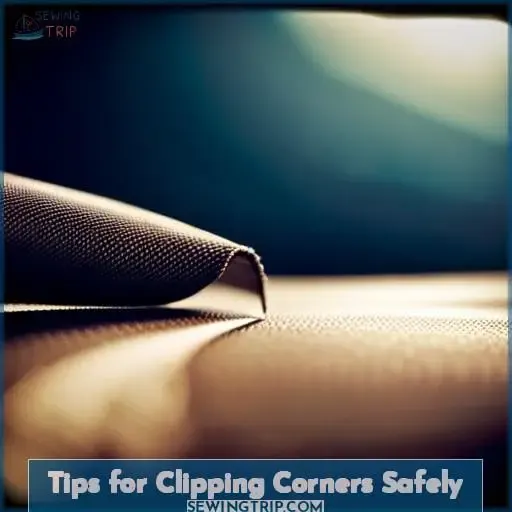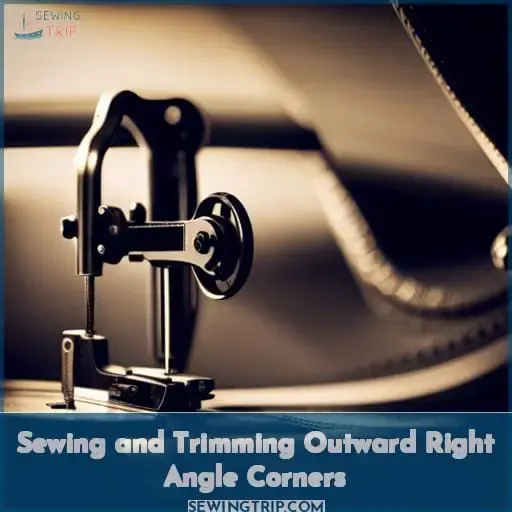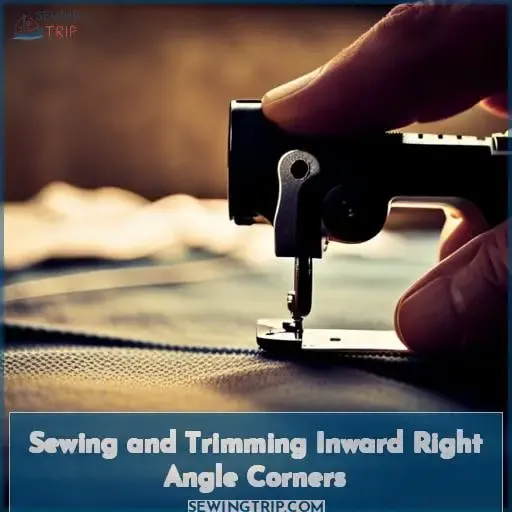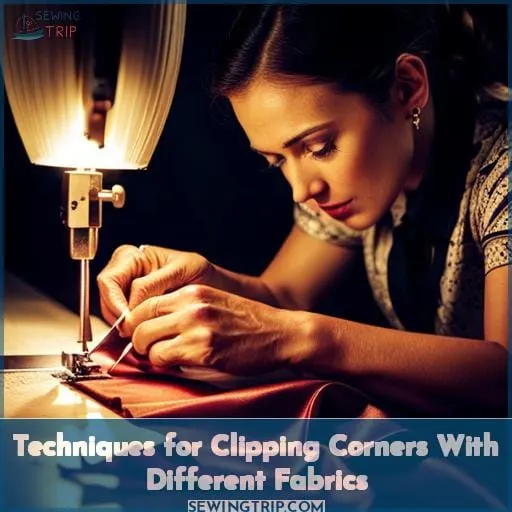This site is supported by our readers. We may earn a commission, at no cost to you, if you purchase through links.
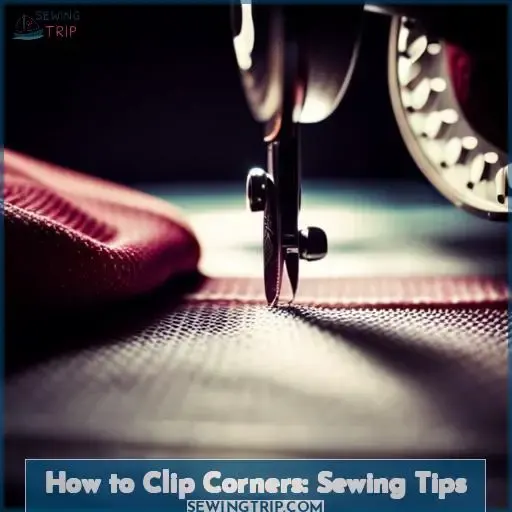 Ready to take your sewing skills to the next level? Discover the power of clipping corners! In this article, you’ll learn essential tips and techniques for achieving professional-looking seams.
Ready to take your sewing skills to the next level? Discover the power of clipping corners! In this article, you’ll learn essential tips and techniques for achieving professional-looking seams.
From inward and outward corners to convex and concave curves, we’ve got you covered. Say goodbye to bulky or lumpy corners and hello to clean, sharp edges that elevate your sewing projects.
Get ready for liberation as you master the art of clipping corners in your sewing adventures!
Table Of Contents
- Key Takeaways
- Clipping Sewing Tutorial
- How to Clip Curves in Sewing
- How to Press Corners and Curves
- When to Use Clipping Corners
- Tips for Clipping Corners Safely
- Sewing and Trimming Outward Right Angle Corners
- Sewing and Trimming Inward Right Angle Corners
- Techniques for Clipping Corners With Different Fabrics
- Frequently Asked Questions (FAQs)
- Conclusion
Key Takeaways
- Clipping corners is essential for achieving professional-looking sewing projects.
- Different clipping techniques are used for different types of corners and curves.
- Pressing corners and curves properly is important for neat and polished results.
- Knowing when to use clipping corners can greatly improve the overall appearance of various sewing projects.
Clipping Sewing Tutorial
Let’s now dive into a tutorial on clipping in sewing. Clipping is an important technique that helps give your finished projects a professional look and prevents bunching or pulling. We’ll discuss the definition of clip curves, how to clip outward corners, and how to clip inward corners for beautiful results in your sewing projects.
Importance of Clipping in Sewing
Clipping is essential in sewing to achieve professional-looking projects and prevent bunching or pulling.
Knowing when to clip corners can help prevent bulk and create sharp, clean edges. Use a pointy object to snip corners at an angle, ensuring you don’t cut into the seam allowance.
Clipping curves also requires careful attention to maintain smooth lines in your sewing projects.
Definition of Clip Curves in Sewing
Now let’s delve into the definition of clip curves in sewing by understanding how to achieve precise and wrinkle-free curved areas.
Clip curves is a technique where tiny clips are made with scissors into the seam allowance of curved areas. This helps the fabric turn to the right side without any wrinkles, giving your projects a professional look.
Clipping Outward Corners
To clip outward corners when sewing, start by:
- Clipping the point at a diagonal on the seam allowance to reduce bulk.
- Using a point turner to push out the corners.
This will create crisp outward right angle corners.
Clipping Inward Corners
When sewing, it’s important to:
- Trim excess fabric
- Clip into inward corners for clean corners and professional results.
You can achieve this by making a small cut almost up to the seam allowance into the corner.
How to Clip Curves in Sewing
Now let’s move on to the technique of clipping curves in sewing.
Clipping convex curves involves cutting v-shaped notches along the curve every ⅜ inch (1cm) of the seam allowance, while for concave curves, make small snips along the curve almost up to the stitch line.
These techniques help ensure smooth and wrinkle-free curved seams when turned right side out.
Clipping Convex Curves
If you’re wondering how to clip convex curves when sewing, follow these steps for a professional finish.
To clip convex curves, start by using pinking shears or a rotary cutter to make small v-shaped notches along the curve about every ⅜ inch of the seam allowance. This helps reduce bulk and allows the fabric to lay flat when turned right side out.
Another option is to use a zigzag stitch on your sewing machine or serger to prevent fraying along curved edges.
Clipping convex curves is essential for achieving clean and seamless results in your sewing projects.
Clipping Concave Curves
Now let’s move on to clipping concave curves in sewing.
When working with fabric that has inward curves, such as a neckline or armhole, it’s important to know how to clip properly for a clean and professional finish.
Here are the steps you need to follow:
- Identify the concave curve where you need to clip.
- Make small snips along the curve, stopping just before reaching the stitch line.
- Use a point turner or another blunt object to gently push out the clipped area.
- Press the fabric carefully.
By mastering this technique of clipping concave curves, you’ll have more control over your sewing projects and achieve beautifully curved edges every time.
How to Press Corners and Curves
To press corners and curves, use a blunt object like a point turner or chopstick to smooth them out before pressing.
This step is crucial in achieving crisp, professional-looking seams and ensuring that your sewing projects have clean lines.
Here’s how to press corners and curves effectively:
- Push out corners:
- After sewing a corner, trim the excess fabric at an angle to reduce bulk.
- Then, gently push out the corner using a blunt object such as a point turner or even a butter knife. This will help create sharp edges.
- When dealing with curves, it’s important to flatten them properly for neat results.
- Use your chosen blunt object to carefully run along the curve from inside the seam allowance outward.
- Once you have pushed out both corners and smoothed any curved areas, give them all a good press with an iron set on appropriate heat for your fabric type.
- Make sure not to skip this step as pressing helps set stitches and gives your work that polished finish.
By following these steps when working with corners and curves in sewing projects, you’ll achieve well-defined shapes without any unsightly bunching or pulling of fabric.
When to Use Clipping Corners
When sewing corners, it’s important to consider when and how to use clipping techniques. Clipping corners can be a helpful method in various sewing projects such as bags, clothes, hats, pillows, and quilts.
It helps achieve sharp corners and eliminates bulk for a more professional finish. By making small cuts at the corner angles or trimming excess fabric diagonally before turning the project right side out, you can create clean edges that lay flat.
To give you a better understanding of when to use clipping corners in different projects, here’s a table outlining some common scenarios:
| Project | When to Clip Corners |
|---|---|
| Bags | For crisp and flat bag corners |
| Clothes | To avoid bunching or pulling on garment seams |
| Hats | For precise shaping |
| Pillows | To achieve neat edges |
Clipping corners also comes in handy when working with curved areas like collars or sleeves.
Remember not to cut into your seam allowance while clipping the fabric and be mindful of fraying if your fabric tends to unravel easily.
you can master the art of clipping corners effectively while giving your sewn creations that polished look they deserve.
Tips for Clipping Corners Safely
Ensure safety when clipping corners by practicing caution and precision.
Here are some tips to help you clip corners safely:
- Don’t Clip Too Close: When trimming the excess fabric at a diagonal angle, make sure not to clip too close to the seam allowance. Leaving a small amount of fabric will prevent fraying and maintain the integrity of your project.
- Use a Sharp Object: To push out the corner after clipping, use a point turner or another pointed but not sharp object like a chopstick or butter knife. This will help create clean, crisp corners without damaging your fabric.
- Avoid Bulk and Fraying: Clipping corners helps reduce bulk in your sewing projects, but be mindful of how much your fabric tends to fray before snipping too close to the edge. If necessary, finish off raw edges with techniques like zigzag stitching or using a serger for added reinforcement.
By following these tips for clipping corners safely, you can achieve professional-looking results while maintaining control over potential issues such as fraying and bulky seams.
Sewing and Trimming Outward Right Angle Corners
Start by trimming each side of the outward right angle corner at an angle to reduce bulk when sewing.
To achieve this, you have a few options.
One method is to use a rotary cutter and carefully trim away excess fabric on both sides of the corner.
Another option is to employ pinking shears, which will create zigzag edges that help prevent fraying while reducing bulk.
If you prefer using your sewing machine, try clipping corners with a zigzag stitch.
This technique involves stitching along the edge of the fabric where it meets at the corner, creating small diagonally angled cuts in the seam allowance.
For those fortunate enough to own a serger or overlocker machine, clip corners with ease using its built-in cutting blade as you sew around them.
Lastly, if precision and finesse are what you seek for your outward right angle corners when turning them inside out after sewing – consider utilizing a point turner tool! Gently push out each corner so they become sharp and defined without damaging delicate seams or fabrics.
By mastering these techniques for clipping outward right-angle corners using various tools such as rotary cutters,pinking shears,zigzag stitches,surgers,and point turners,you can confidently approach any project involving these types of angles.
With practice comes mastery; embrace liberation in knowing that every finished product will exude professionalism and craftsmanship thanks to your newly acquired skills in trimming outer-right angles effectively.
Sewing and Trimming Inward Right Angle Corners
To sew and trim inward right angle corners, simply follow these steps.
When working with fabrics such as leather or knits, it’s important to clip the corners without fraying the fabric.
Firstly, make a small cut almost up to the seam allowance into the corner. This will allow the seam to open up nicely when turned right side out.
When clipping corners on curves or bias binding, use v-shaped notches along convex curves every ⅜ inch (1cm) of the seam allowance. For concave curves, put little snips along the curve almost up to where you stitched.
After trimming those inward right angle corners or clipping those curved edges properly according to your fabric type and project needs; press them using a blunt object like a point turner or even a butter knife before giving them a good press with an iron for crisp results.
By following these techniques for sewing and trimming inward right angle corners on various fabrics like leather and knits as well as on curved edges or bias bindings in your projects; you’ll achieve professional-looking finishes that showcase your mastery in sewing skills while ensuring liberation from any bulkiness!
Techniques for Clipping Corners With Different Fabrics
When working with different fabrics, adapt your clipping techniques to ensure clean corners and prevent fraying. Different materials require precision techniques for corner finishing in order to achieve professional results.
Here are some tips for clipping corners with various fabric types:
- Fabric Compatibility: Consider the characteristics of the material you’re working with before deciding on a clipping technique.
- Sewing Challenges: Some materials pose unique challenges when it comes to corner clipping. For example, stretchy knits may need special attention to maintain their shape while still achieving crisp corners.
- Material Types: Each type of fabric has its own properties that affect how it can be clipped without compromising the integrity of the seam or causing excessive fraying. Cottons and linens generally respond well to traditional corner trimming methods, while synthetic blends might require alternative approaches.
By understanding these factors and applying precise techniques tailored specifically for each material type, you can successfully clip corners on a variety of fabrics without sacrificing quality or risking damage during sewing projects.
Frequently Asked Questions (FAQs)
What is the purpose of clipping corners in sewing?
Clipping corners in sewing allows you to achieve a professional and polished look for your projects. It reduces bulk, prevents bunching or pulling, and creates crisp and flat corners.
Can clipping corners be done on all types of fabric?
Yes, you can clip corners on all types of fabric. It helps reduce bulk and gives your finished projects a professional look.
Clipping corners allows for smoother curves and prevents bunching or pulling in the seams.
Are there any alternative methods to clipping corners in sewing?
Looking to skip the snipping? Try grading your corners instead.
By trimming each layer at different lengths, you’ll reduce bulk and achieve a clean finish.
Who knew sewing mastery could be so liberating?
How does clipping corners affect the overall durability of the project?
Clipping corners in sewing enhances the durability of your project. By reducing bulk and preventing bunching or pulling, clipped corners result in a professional finish.
Are there any specific tools or equipment recommended for clipping corners in sewing?
When it comes to clipping corners in sewing, having the right tools can make all the difference.
Look for a lightweight bamboo seam ripper or point turner that will help you:
- Remove stitches
- Mark fabric without damaging it.
Conclusion
Ready to take your sewing skills to the next level? Clipping corners is the secret to achieving professional-looking seams in your sewing projects.
By mastering the techniques for clipping inward and outward corners, as well as convex and concave curves, you can say goodbye to bulky and lumpy corners.
With a little practice and the right tips, you’ll be able to create clean, sharp edges that elevate your sewing projects to new heights.
So why wait? Start mastering the art of clipping corners in your sewing adventures today!

